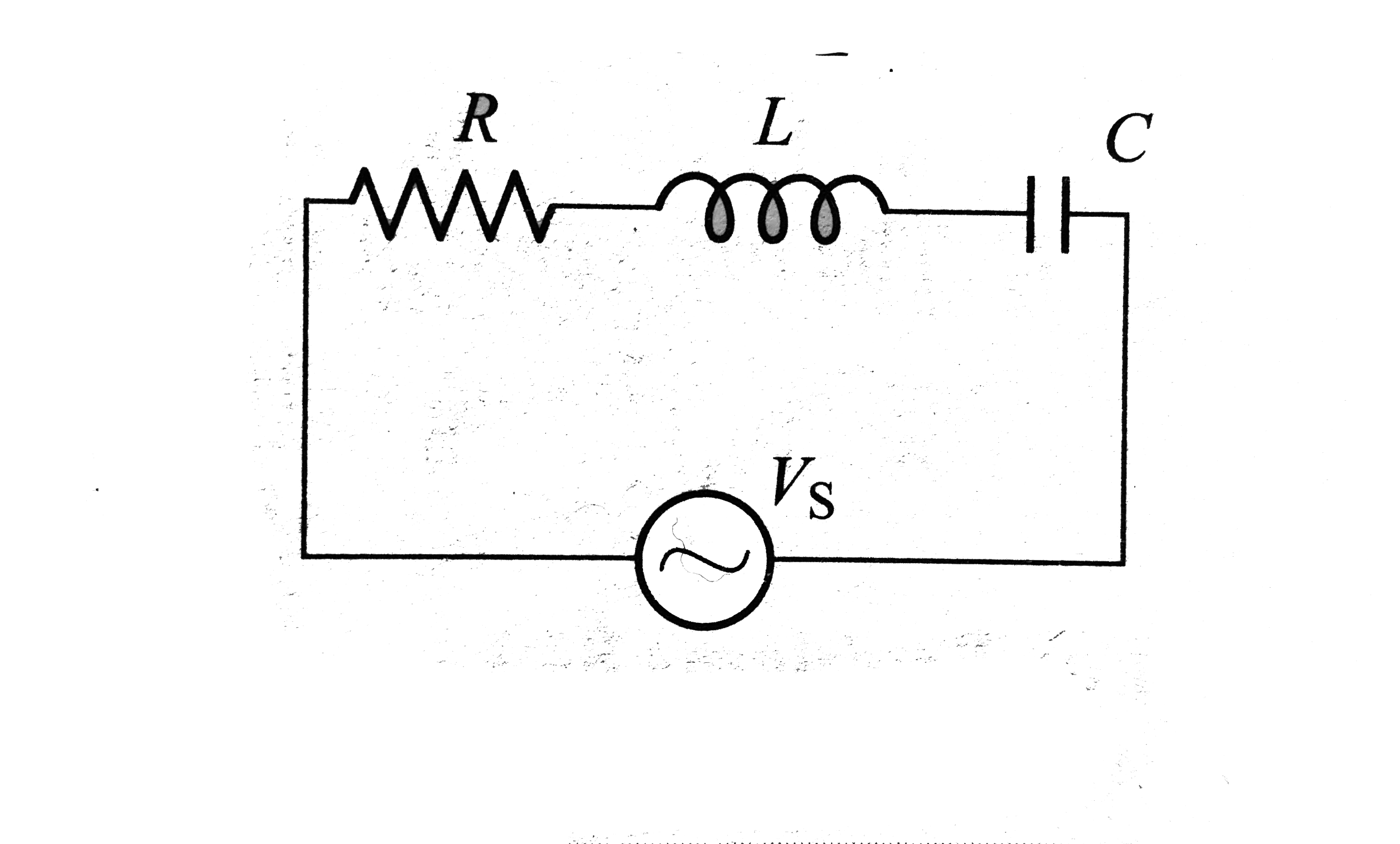Statement 1: In a series RLC circuit if (VR),(VL)and(VC) denote rms voltage across R,L and C respectively and (VS) is the rms voltage across the source. Then (Vs)=(VR)+(VL)+(VC)
Statement 2: In ac circuit, Kirchhoff's voltage law is correct at every instant of same.

Statement 1 is true, statement 2 is true, Statement 2 is the correct explanation for statement 1.
Statement 1 is True, Statement 2 is true , Statement 2 is NOT the correct explanation for Statement 1
Statement 1 is True, Statement 2 is False.
Statement 1 is False, Statement 2 is true
The correct Answer is:D
Statement 1 is flase because the given relation is true if all vlotages are instantaneous.
Topper's Solved these Questions
- BOOK - CENGAGE PHYSICSCHAPTER - ALTERNATING CURRENTEXERCISE - Exercises Linked Comprehension25videos
ALTERNATING CURRENT
- BOOK - CENGAGE PHYSICSCHAPTER - ALTERNATING CURRENTEXERCISE - Exercises Integer4videos
ALTERNATING CURRENT
- BOOK - CENGAGE PHYSICSCHAPTER - ALTERNATING CURRENTEXERCISE - Exercises Multiple Correct5videos
ALTERNATING CURRENT
- BOOK - CENGAGE PHYSICSCHAPTER - OSCILLATIONSEXERCISE - QUESTION BANK39videos
OSCILLATIONS
- BOOK - CENGAGE PHYSICSCHAPTER - ATOMIC PHYSICSEXERCISE - ddp.4.315videos
ATOMIC PHYSICS
Similar Questions
In an LCR series circuit the rms voltages across R L and C are found to be 10V,10V and 20Vrespectively.The rms voltage across the entire combination is
View SolutionIf in a series L-C-R ac circuit, the voltages across R,L,C are V1,V2,V3 respectively. Then the voltage of applied AC source is always equal to
View Solution
Knowledge Check
- Question 1 - Select One
In an LCR series circuit the rms voltages across R,L and C are foundd to be 10V,10V and 20V respectively. The rms voltage across the entire combination is
A30VB1VC20VD10√2V - Question 2 - Select One
In a series L.C.R. circuit, the potential drop across L, C and R respectively are 40V, 120V and 60V . Them the source voltage is
A220VB160VC180VD100V - Question 3 - Select One
In an LCR series ac circuit the voltage across L,C and R are V1,V2 and V3 respectively The voltage of the source is .
A√(V1−V2)2+V23B√V21+(V2−V23C√V22+(V1−V3)2DV1+V2+V3
In a series LCR circuit, VL=VC≠VR. What is the value of power factor ?
View SolutionIn a series LCR circuit the rms voltage across the inductance , capacitance and resistance are respectively 4 V, 8 V and 5 V . The RMS voltage of the AC source in the circuit is
View SolutionIn an LCR series circuit the rms voltages across R L and C are found to be 10V,10V and 20Vrespectively.The rms voltage across the entire combination is
View SolutionIn a series LCR circuit, the the rms voltage supply is 170 V. If VR,VLandVC represent the rms voltage drop across resistor , inductor and capacitor, then
View SolutionIn an LCR series circuit the voltages across R,L and C at resonance are 40Vand60V respectively the applied voltage is .
View Solution

